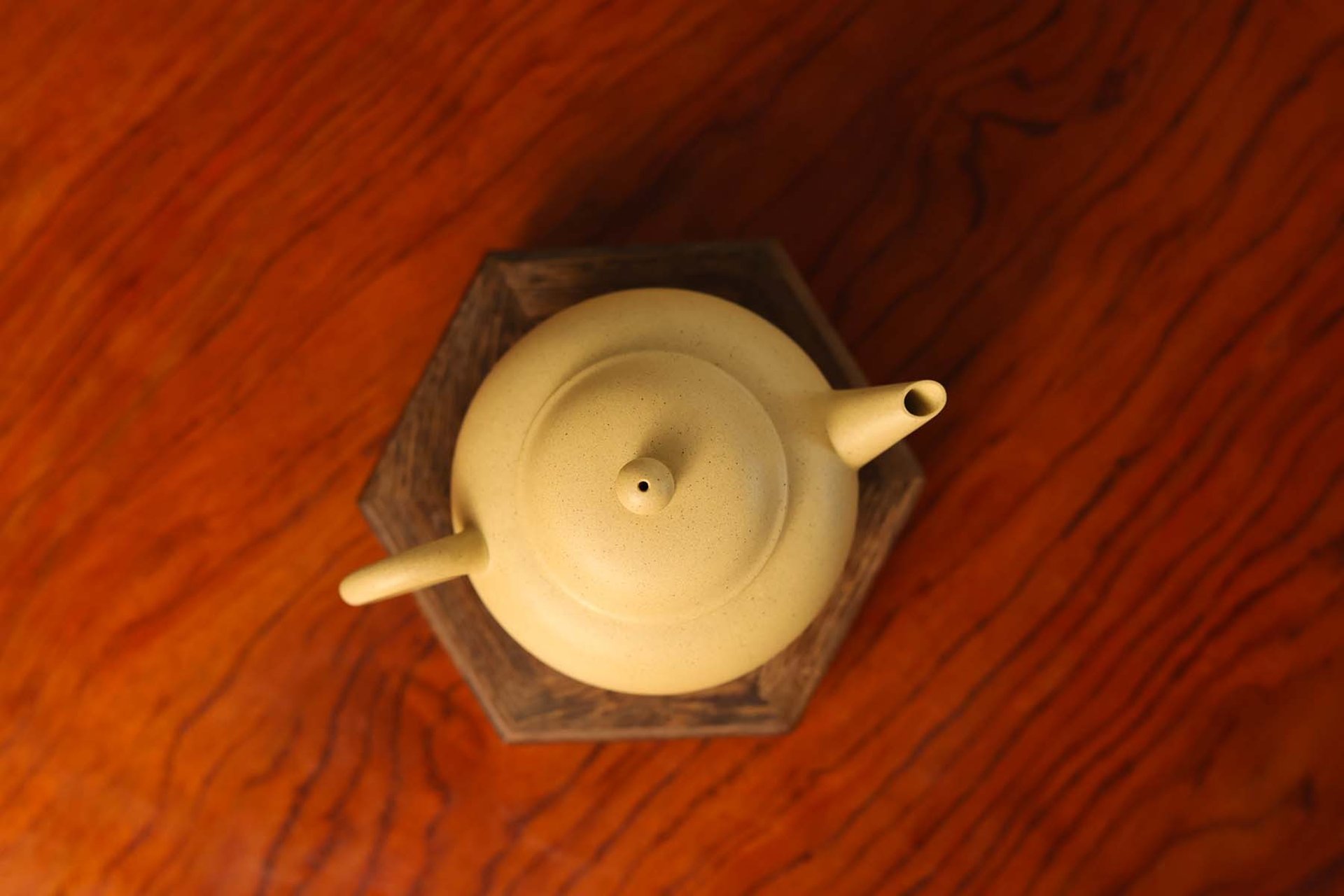
The Ultimate Guide to Yixing Zisha Teapots: Everything You Need to Know
Discover the timeless elegance of Yixing Zisha teapots, crafted from mineral-rich clay in China’s pottery capital. Explore their history, craftsmanship, and cultural significance, and learn how to care for these treasured artifacts. Whether for tea enthusiasts or collectors, Yixing teapots are a perfect blend of art and tradition.
YIXING TEAPOTSEDITOR'S PICKS
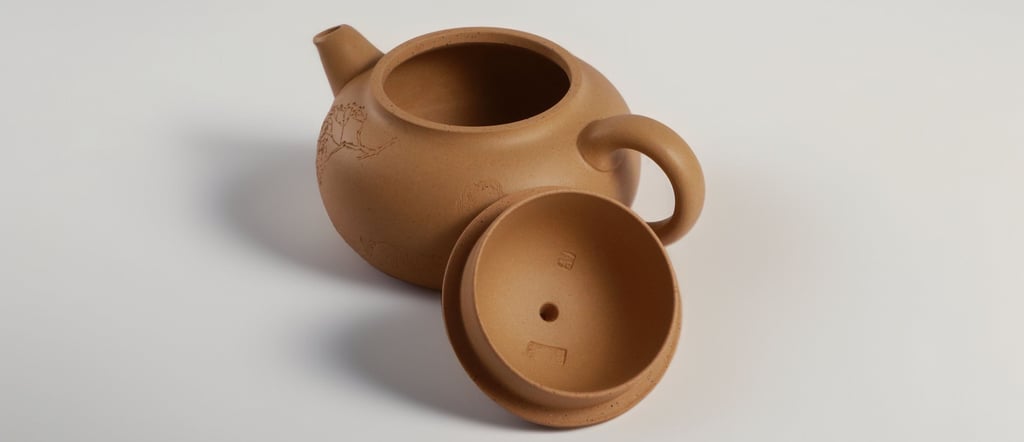

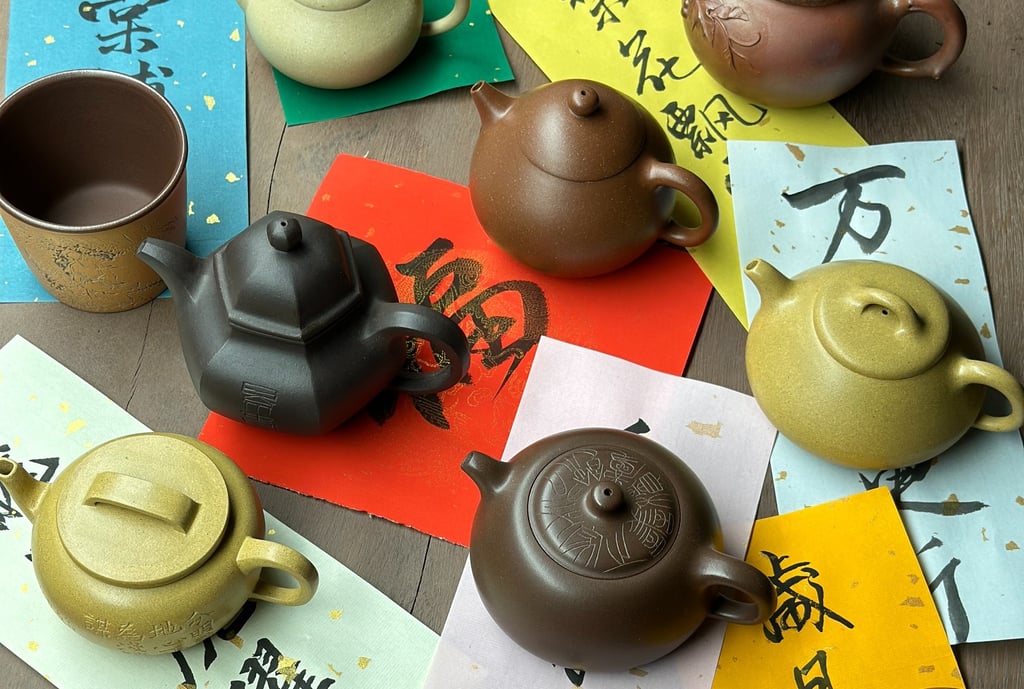

History of Yixing Zisha Teapots
So, let’s talk about the history of Yixing Zisha teapots. You’ve probably seen these iconic teapots pop up in tea shops or on social media, but their roots go way back. These teapots are much more than just pretty things to brew tea in – they carry centuries of tradition and craftsmanship.
Early Beginnings
While there are some remnants of Zisha pottery from the Song Dynasty (960-1279) in Yixing, the real story of the Yixing Zisha teapot starts in the Ming Dynasty (1368-1644). That’s when it all kicked off. Legend has it that a monk from Jinsha Temple crafted the very first teapot using refined clay. Then, Gong Chun, a servant from the Wu family, came in and took the craft to the next level, using wooden boards and bamboo tools to shape the teapots.
The Ming Dynasty
This period was a golden age for Yixing teapots. Scholars and intellectuals started to prefer smaller, more refined teapots. The design got cleaner, more functional, and – importantly – more artistic.
The Qing Dynasty (1644-1912)
During the Qing Dynasty, Yixing Zisha teapots hit new artistic heights. We saw intricate carvings, enamel decorations, and other elaborate designs becoming common. This era pushed the boundaries of what a teapot could be, turning them into true works of art.
Late Qing to Early Republic (1851–1912)
The pace of innovation slowed down a bit, but craftsmanship stayed top-tier. Private workshops flourished, and these teapots continued to be prized by tea lovers and collectors alike.
Modern Era (20th Century–Present)
Today, Yixing teapots are as popular as ever. With over 600 different styles available, the teapots blend traditional techniques with modern needs. People still treasure them not just for brewing tea but for their value as collectible pieces of art.
Craftsmanship of Yixing Zisha Teapots
When it comes to making these teapots, we’re talking about serious craftsmanship. The whole process is a mix of skill, tradition, and pure artistry. So, let’s dive into what goes into making these iconic teapots.
Cultural Value of Yixing Zisha Teapots
Yixing Zisha teapots aren't just functional; they’ve got deep cultural roots that tie into Chinese philosophy, tea culture, and even the literati. They’re more than a way to make tea – they’re a symbol of intellectual, spiritual, and artistic expression. Let’s break down why these teapots hold such cultural weight.
Connection with the Literati
In China, the "literati" were the intellectuals and scholars who shaped much of the cultural landscape. They weren’t just book-smart – they were also key players in the development of Yixing teapots.
So, here’s the thing: Yixing teapots started out as humble pottery. When porcelain became popular during the Ming Dynasty, pottery was pushed to the background, seen as too simple for the refined tastes of the time. Yet, the literati didn’t just settle for fancy gold and porcelain teapots. They chose Yixing teapots, which at the time, were often seen as "ugly ducklings" in comparison.
Why? Because these scholars were all about simplicity, form, and living a more modest lifestyle. The unpretentious beauty of Yixing teapots – their rustic elegance – fit perfectly with the values of the literati. It wasn’t just about the teapot as a tool; it was about embracing a lifestyle grounded in nature, aesthetics, and intellectualism. Over time, these teapots evolved from functional items to revered cultural objects that integrated art, philosophy, and nature.
We’ve got another article diving deep into the close connection between Yixing Zisha teapots and scholar-officials—check it out for more insights.
Connection with Tea Culture
Tea culture in China isn’t just a hobby; it’s a whole vibe. And Yixing teapots are right at the heart of it. They’ve got a unique role in the evolution of tea preparation, serving both as functional tools and cultural icons.
Design Innovation
As the demand for tea grew, so did the expectations for tea utensils. People weren’t just drinking tea – they were elevating the experience. That led to innovation in Yixing teapot designs. Artisans started experimenting with different shapes and sizes, creating teapots tailored to specific types of tea and serving rituals. Each design was a reflection of the evolving tastes of tea drinkers, making every teapot a little piece of art in its own right.
Increased Market Demand
As tea culture became a bigger part of everyday life, the demand for high-quality Yixing teapots soared. More people wanted authentic, boutique teapots to match their growing love for tea. This surge in interest not only helped Yixing teapots gain even more cultural significance but also spurred artisans to get creative, pushing the boundaries of design and quality. Now, you can find Yixing teapots all over the world, each one crafted with the expertise and tradition that makes them so special.
Enriched Cultural Significance
Tea in China isn't just about the drink; it’s tied to deeper philosophical beliefs. Confucianism, Taoism, and Buddhism all have a hand in shaping tea culture, and Yixing teapots are no exception. The design and craftsmanship of these teapots reflect the values of these philosophies. For example, Taoism’s emphasis on simplicity and harmony can be seen in the clean, elegant lines of many Yixing teapots. This isn't just aesthetic – it's about aligning with the natural flow of life, something that’s deeply rooted in Chinese thought.
We have a detailed article exploring the deep connection between tea culture and Yixing Zisha teapots—click to learn more if you're interested!


How to Use and Care for Yixing Zisha Teapots
If you’ve got a Yixing Zisha teapot, you know it’s not just any old teapot. It’s an investment in quality tea and tradition. To get the most out of it, you've got to know how to use and care for it properly. Here's a no-nonsense guide on how to do just that.
Seasoning the Teapot
First thing’s first: when you get a brand new Yixing teapot, it’ll probably have some dust from the crafting process. Don’t stress – it’s normal. Here’s how to prep it for its first brew:
Rinse the teapot with warm water to get rid of the dust.
Pour boiling water inside and out, and repeat this step twice. This gets the teapot ready to go.
Prepping the Teapot Before Brewing
Before you even think about brewing your tea, you’ve got to give your Yixing teapot a little warm-up:
Rinse both the inside and outside with hot water. It’ll clean out any leftover dust, help disinfect the teapot, and get it to the perfect temperature for brewing.
This little ritual also helps prevent any potential mould build-up, ensuring the teapot’s longevity and a cleaner brew.
Brewing the Tea
Now, when it comes to brewing the tea, it’s all about balance. The amount of tea you use depends on the type of leaves, how tightly they’re packed, how much they expand in water, and the size of your teapot. If you keep track of your brew each time, it can be really helpful for fine-tuning your tea-making process.
For more on how to brew loose leaf tea, check out our article Ultimate Guide to Loose Leaf Tea.
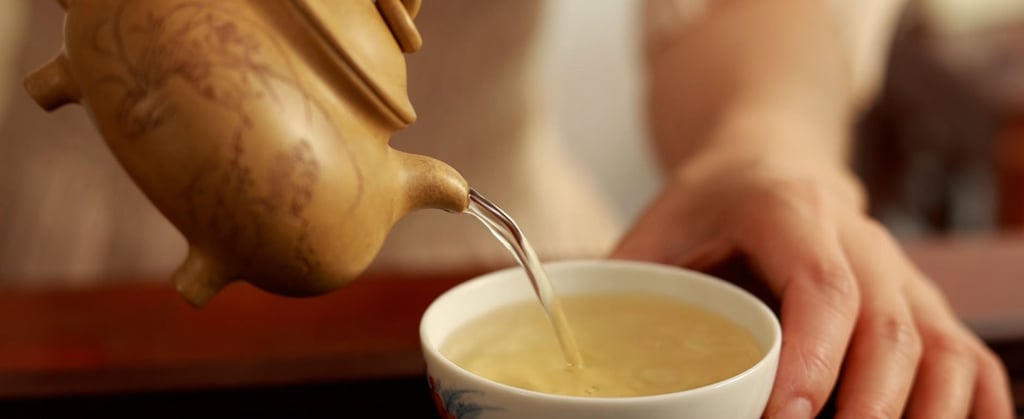

Famous Yixing Zisha Potters and Their Masterpieces
When you dive into the world of Yixing Zisha teapots, you can’t ignore the heavy hitters— the potters whose creations have elevated the craft to an art form. These artists not only shaped the future of Yixing teapots but also connected them to deeper cultural stories and craftsmanship. Let’s take a look at some of the most famous potters and their iconic works.
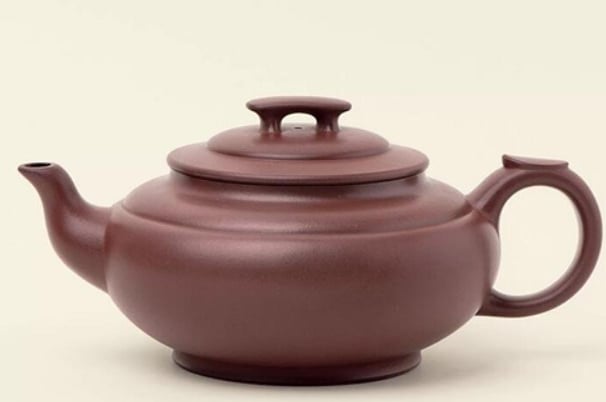

Market Challenges
Let’s get real for a second— Yixing Zisha teapots are hot right now. As their value grows, so do the number of counterfeit versions flooding the market. And this isn’t just about people trying to pull a fast one; it’s about damaging traditional craftsmanship and misguiding consumers.
You see, some of these fake teapots are made by machines, not the skilled hands of artisans. And trust me, there’s a big difference. Machine-made teapots often use moulds, and they’re not built to last the way a half-handcrafted one would. Worse, to make the clay flow better, they add harmful stuff like paraffin and glass powder. Not only does this mess with the teapot’s quality, but it could also be dangerous to your health. Yet, these teapots are sold as “handmade” and slapped with a hefty price tag. It’s a scam, plain and simple.
Then there’s the issue of self-proclaimed "masters" who aren't masters at all. They make low-quality teapots and try to sell them at ridiculous prices. This is misleading, and it harms the reputation of the real artisans who spend years perfecting their craft. I’m talking about twenty to thirty years of hard work to become a true master. The reality is that most novices just aren’t skilled enough to produce a teapot that meets the standard, and selling that for top dollar is just irresponsible.
How to Buy a Genuine, High-Quality Yixing Teapot
So, how do you make sure you’re buying the real deal? Well, the best way is to go straight to the source— buy from a certified artisan in Yixing. But, here's the thing: making a teapot isn’t a quick job. It takes time, precision, and patience. So, an artisan who’s focused on crafting great teapots might not have the time or resources to run a big operation. This is where things get tricky.
If you want to guarantee quality, you can go through a reputable intermediary. Just keep in mind that these middlemen typically charge a premium for their services. It’s their way of making sure you’re getting the real thing, but you’ll pay a bit extra for the peace of mind.
Now, if you want to cut out the middleman and still get an exceptional teapot, you can always trust brands that have built their reputation over time. Take TeapotArtisan, for example. We’re a family-run business with generations of experience in making Yixing teapots. Our artisans, Kuai Liangrong and Kuai Yunhan are certified and internationally recognised for their skill, and we’re all about keeping the craft pure. By cutting out the middlemen, we offer high-quality teapots at a fair price. And we don’t just leave you hanging after the sale— our team is there to handle all your after-sales service too, so you know you’re taken care of from start to finish. You can learn more about us on our official website.
Introduction
The Yixing Zisha Teapot is one of China’s most famous teapots. This article covers everything you need to know about Yixing Zisha teapots, exploring topics such as:
What is a Yixing Zisha Teapot?
Characteristics of Yixing Zisha Teapots
Types of Yixing Zisha Teapots
History of Yixing Zisha Teapots
Craftsmanship of Yixing Zisha Teapots
Cultural Value of Yixing Zisha Teapots
How to Use and Care for Yixing Zisha Teapots
Famous Yixing Zisha Potters and Their Masterpieces
Common Misconceptions About Yixing Teapots
Market Challenges
How to Buy a Genuine, High-Quality Yixing Teapot
Let’s dive into the world of Yixing Zisha teapots!
What is a Yixing Zisha Teapot?
What is Yixing?
Yixing is a city in eastern China. It’s called the "Pottery Capital" for a reason. The city has been producing some of the world’s finest ceramics for centuries, and it’s particularly famous for its teapots made from a unique type of clay. Yixing is ground zero for Zisha teapot making, thanks to its ideal clay and conditions. But what really sets it apart is the creativity and skill of the artisans, who turn each teapot into a work of art.
What is Zisha?
Now, let’s talk about Zisha(紫砂). The name "Zisha" translates to "purple sand" in English, but that’s a bit of a misnomer. While there is no exact English equivalent for the term "Zisha," it is a type of clay that’s rich in minerals and iron. This particular clay has undergone specific geological processes, which give it a sandy texture. The Zisha clay found in Yixing is considered top-notch because of its composition and long-standing history in teapot production.
What makes Zisha really stand out is that it’s easy to shape, which means artisans can create all sorts of intricate designs. It also has a low firing shrinkage rate, so your teapot’s lid fits perfectly every time. And it’s not just about looks – the final product has some really cool characteristics, which we’ll get into below.
Characteristics of Yixing Zisha Teapots
So, why should you care about Yixing Zisha teapots? Well, let’s dive into the details that make them worth the hype.
Flavor and Aroma Enhancement
Zisha clay’s natural porosity means that your teapot absorbs and retains the flavors and aromas of the tea. Over time, as you use your teapot, it actually gets better. It’s like the teapot is "seasoned," and the more you brew tea in it, the richer and more complex your tea tastes.
Distinct Breathability
One of the coolest things about Yixing teapots is how they breathe. The unique properties of the clay stop the tea from developing any off-flavors or going stale. Even if you leave your tea overnight, you won’t find it tasting strange the next day. Fresh tea, every time.
Thermal Stability
Yixing teapots are built tough. They can handle rapid temperature changes, which means you don’t have to worry about them cracking if you pour boiling water into them. These teapots can even survive being put directly on a flame or in the microwave. So, they’re not just pretty – they’re practical too.
Slow Heat Transfer and Insulation
Another reason to love Yixing teapots is how they hold and gradually release heat. This means your tea stays warm for longer, but the outside of the pot stays cool, which makes handling it much safer. It’s a win for both your tea and your fingers.
Increased Shine with Use
Over time, the surface of your Yixing teapot will develop a natural shine. It gives the teapot a beautiful, glossy finish that’s not just for looks – it reflects light in a way that adds elegance to your tea set.
If you’d like to explore more about the unique features of Yixing teapots, check out our article "Exploring the Unique Features of Yixing Teapots" for more insights.
Types of Yixing Zisha Teapots
Yixing teapots come in all kinds of shapes and styles, so whether you’re a beginner or a seasoned tea lover, there’s something for you.
By Shape
Duozhi Teapot (掇只): This design is all about layers. It looks like stacked spheres or hemispheres, and the name "Duozhi" reflects this stacked style. It’s a unique shape that stands out on any shelf.
Shihpiao Teapot (石瓢): A classic. This is the go-to teapot for beginners, featuring a smooth, trapezoidal body with soft curves. The broad surface makes it ideal for decorations like calligraphy and carvings.
Gongdeng Teapot (宫灯壶): Inspired by Chinese palace lanterns, the Gongdeng teapot represents light and prosperity. It’s both a functional and artistic piece, with a rounded body that reflects traditional Chinese aesthetics.
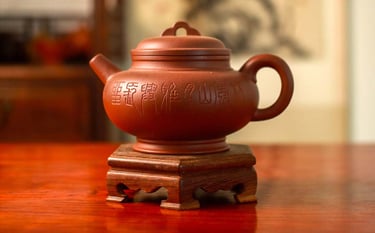

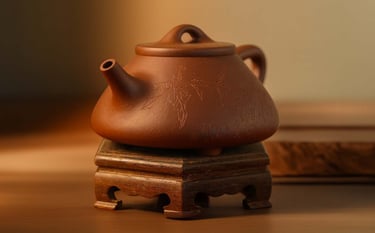

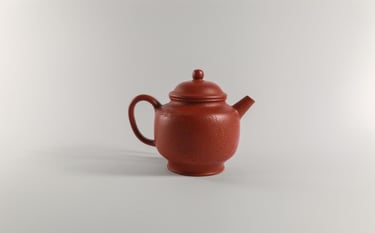

By Clay Type
Tianqing Clay (天青泥): This clay has a bluish-gray colour and is considered rare and highly prized. It’s got a double-pore structure, which helps retain heat, making your tea taste even better.
Benshan Green Clay (本山绿泥): Known for its smooth texture and excellent heat retention, this clay is perfect for making teapots that allow your tea to steep evenly.
Dahongpao Clay (大红袍泥): Famous for its vibrant red hue, Dahongpao clay is rare and requires a skilled artisan to craft it. But when done right, the results are stunning – elegant, beautiful teapots that stand out in any collection.
Due to space limitations, we’ve only listed a few shapes and clays, but there’s so much more to discover. If you’d like to learn more, click here to read our article.
Making and Decorating Yixing Teapots
There are two key parts to making Yixing teapots: the actual teapot-making and the decoration. Both are intricate, and mastering either one takes years of practice.
Teapot-Making Techniques
Simple Forms: These are your basic round or square teapots. Round ones are shaped by beating, while square ones are assembled from multiple pieces.
Nature-Inspired Forms: These teapots are a lot more complex. Creating nature-inspired forms teapots requires a mix of techniques like carving, shaping, pinching, and engraving. It’s a delicate art, and the results are often stunning.
Structured Ribbed Forms: These teapots feature precise, evenly divided patterns inspired by natural shapes like flowers and plants. The design blends smooth, flowing lines with strict structural symmetry, resulting in a perfectly balanced form. Crafting ribbed forms requires exceptional skill, as mastering simple teapots or nature-inspired forms doesn’t guarantee success in this intricate style.
What’s cool is that not everyone can master all these forms. If you’re great at making simple forms, it doesn’t mean you’ll nail the more complex nature-inspired forms. And the other way around. This is one of the challenges of keeping the tradition alive.
Decorative Arts
As Yixing teapots evolved, decorative arts became a huge part of the process. Think ceramic carving, clay painting, twisting, inlaying, and even gilding. These decorative techniques aren’t easy – they require a deep understanding of both the material and the history of Chinese crafts. For example, ceramic carving mixes ancient seal engraving with teapot art, while clay twisting blends Tang dynasty techniques with Yixing's unique style.
A single teapot can often need two artisans working together to bring the design to life. That’s how complex and detailed this craft is. It’s not just about making a teapot – it’s about creating something that tells a story.
We have more in-depth insights and details about Yixing Zisha teapot craftsmanship—click below to learn more.
Tools Used in Crafting Yixing Teapots
When making these teapots, artisans rely on some pretty specific tools. Let’s take a look at the ones that help them create these beautiful, functional works of art.
Wooden Tools: Made from hardwoods like rosewood and sandalwood, these are used for shaping and refining the teapots. They help ensure clean, smooth edges and prevent the clay from sticking.
Ox Horn Tools: Polished ox horn tools are perfect for smoothing and polishing surfaces, giving the teapots that glossy, finished look.
Leather Tools: These soft tools are used in the early stages of shaping to smooth out edges without over-polishing.
Metal Tools: Metal blades and knives are key for carving intricate designs or making detailed cuts. They help give each teapot its personality.
Yixing Zisha Clay Tools: Some tools are made from the same clay used for the teapots themselves, ensuring a seamless connection between the material and the final product.
If you want to learn more about the tools used in crafting Yixing Zisha teapots, check out our detailed article on this topic.
Fully-Handmade vs Half-Handmade Teapots
When you buy a handmade Yixing teapot, you’ll come across two main types: fully-handmade and half-handmade.
Fully-Handmade: As the name suggests, these teapots are crafted entirely by hand without using plaster moulds for shaping. While artisans may use tools to refine and perfect the form, these tools are for precision, not to speed things up. This meticulous process makes fully-handmade teapots more time-consuming and valuable.
Half-Handmade: These teapots use plaster moulds for some parts (like the handle). Even though they’re made with the help of moulds, they still require a lot of handcrafting, especially when it comes to decorative elements. These tend to be cheaper, but don’t let that fool you – they still require significant skill and effort.
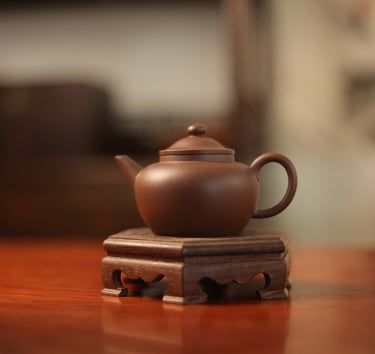

Simple Forms
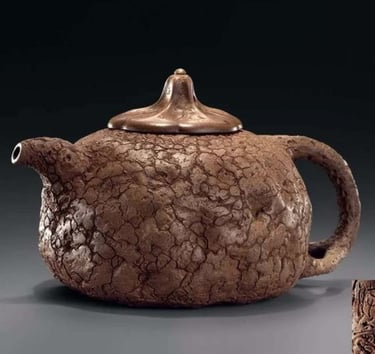

Nature-Inspired Forms: Mimicking the shape of a burl.
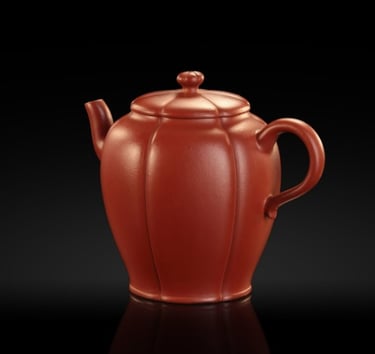

Structured Ribbed Forms
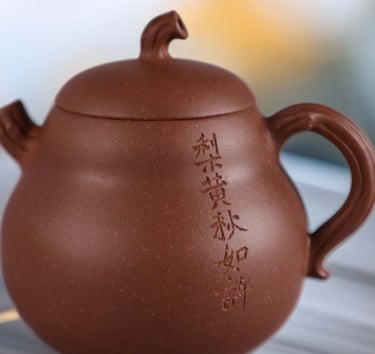



carving
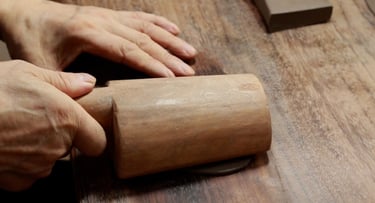

wooden tools
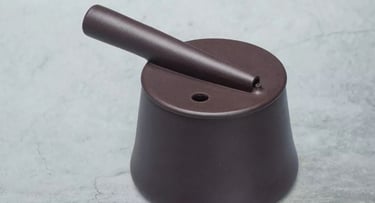


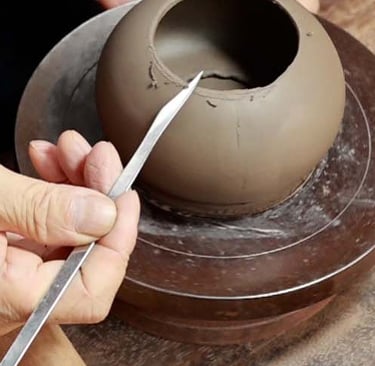
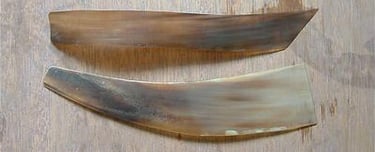

ox horn tools
metal tools
Yixing Zisha clay tools
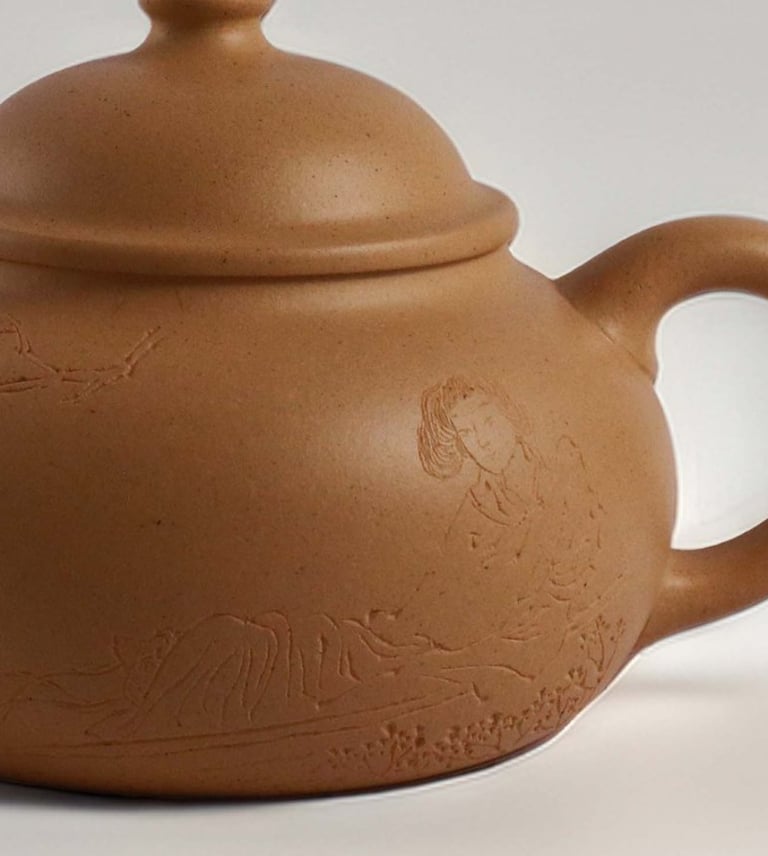

The teapot-making process is huge, requiring artisans to perfect details as fine as a hair.
Connection with Philosophy
Yixing teapots aren’t just visually striking – they also embody key ideas from traditional Chinese philosophy. Their designs draw heavily from the natural world, reflecting Taoist concepts of balance and harmony.
Many Yixing teapots are shaped like trees, flowers, or even food, mirroring the Daoist belief in the unity of humans and nature. The goal? To create a harmonious relationship between the teapot, its contents, and the person using it. There’s a real effort to blend humanity with nature through the design of the teapot itself.
But it doesn’t stop there. Yixing teapots also have ties to Buddhism. Take the Rongtian Teapot, for example – it was inspired by the Buddhist "Laughing Buddha," symbolising the idea of tolerance and the ability to embrace all things. These designs tap into deeper spiritual ideas like simplicity, mindfulness, and inner peace. The teapot isn’t just for drinking tea; it’s a vessel for reflection, connection, and balance.
Want to dive deeper into the Buddhist influence on Yixing teapots? Check out this link.
Cleaning After Brewing
Clean your Yixing teapot promptly after each use. Here’s what you need to do:
Rinse it with hot water to wash out any leftover tea.
Wipe it down with a soft, clean cloth to keep it looking good.
Remove the lid and let it dry out in a well-ventilated area before storing it.
Fun Fact: Gently wipe the teapot with a soft towel or soft-bristled brush to keep it looking fresh. Over time, this will also give it a matte finish that’s unique to Yixing teapots. And don’t worry – this won’t fade, even with heat or high-pressure washing.
Storing Your Yixing Teapot
When storing your Yixing teapot, keep it in a dry spot with good airflow. Avoid areas with lots of dust or oil smoke, as that can mess with the teapot’s sheen. It’s all about keeping it in good condition for the long haul.
Gu Jingzhou's "Shangxin Bridge Teapot"
Gu Jingzhou is a name that comes up often when discussing Yixing teapots. His "Shangxin Bridge Teapot" is a showstopper. The graceful ripples on the teapot's body mimic the calmness of water, and the bridge-shaped handle brings to mind the classic Chinese stone bridges. The lid even has a boat-shaped ornament, adding a whimsical touch. It’s a teapot that captures the essence of a peaceful water town, much like those depicted in traditional Chinese ink paintings. If you appreciate a blend of nature and artistry, this piece is a perfect example of how a teapot can tell a story.
Shao Daheng's "Fish to Dragon Teapot"
Next up is Shao Daheng’s "Fish to Dragon Teapot," created during the Qing Dynasty. This teapot is rich in symbolism. The movable dragon head on the lid and the intricate fish and dragon motifs on the body represent the Chinese myth of the golden carp transforming into a dragon. The craftsmanship here is exceptional— this isn’t just a teapot; it’s a cultural statement. Fun fact: this teapot was auctioned for an eye-watering $3.5 million. Yeah, it’s that good. It’s a perfect example of how Yixing teapots can carry deep cultural meaning while showcasing impeccable artistry.
Kuai Liangrong's "Sunflower and Cluster Ball Teapot"
Kuai Liangrong is another legend in the Yixing teapot world, and his "Sunflower and Cluster Ball Teapot" is a work of art. It combines the texture of a sunflower and the "cluster ball" design, where two rounded balls are stacked together. The lid has a smooth bead as a knob, making it look elegant and polished. The shape might seem simple, but don’t be fooled— the craftsmanship here is all about precision. Even a slight shift in curvature can throw off the balance. If you're interested in his works, feel free to visit us at TeapotArtisan to learn more.
Common Misconceptions About Yixing Teapots
There are a lot of myths floating around about Yixing teapots. Some of them can mislead you into thinking that price equals quality, or that certain methods of making teapots are more valuable than others. Let’s clear up some of these misconceptions.
The More Expensive the Teapot, the Better
Here’s the thing: just because a Yixing teapot is expensive doesn’t mean it’s always better. Price is one factor, sure, but it’s not the whole story. What really matters is the quality of craftsmanship, the materials used, and the purpose the teapot is made for. A higher price tag might reflect the reputation of the potter or the rarity of the piece, but it doesn’t necessarily guarantee a better tea experience. Don’t get swayed by price alone—focus on what makes the teapot special.
Half-Handcrafted Yixing Teapots Have No Value
It’s true that fully handmade Yixing teapots are generally considered superior to half-handcrafted ones. However, that doesn't mean half-handcrafted teapots are without value. Even when molds are used to shape the teapot, a significant amount of manual work is still required. The artisan must refine the details carefully, which takes considerable time and skill. So, while half-handcrafted teapots may not be 100% handmade, they still hold great value and craftsmanship.
Tea Stains Should Not Be Removed from Yixing Teapots
Another myth: that you shouldn’t clean the tea stains on a Yixing teapot because it adds character. Keeping the teapot clean helps maintain its integrity, ensures better tea taste, and stops any buildup that could damage the teapot over time. So, while the patina adds a certain charm, don’t skip the cleaning. A well-maintained teapot will last longer and perform better.
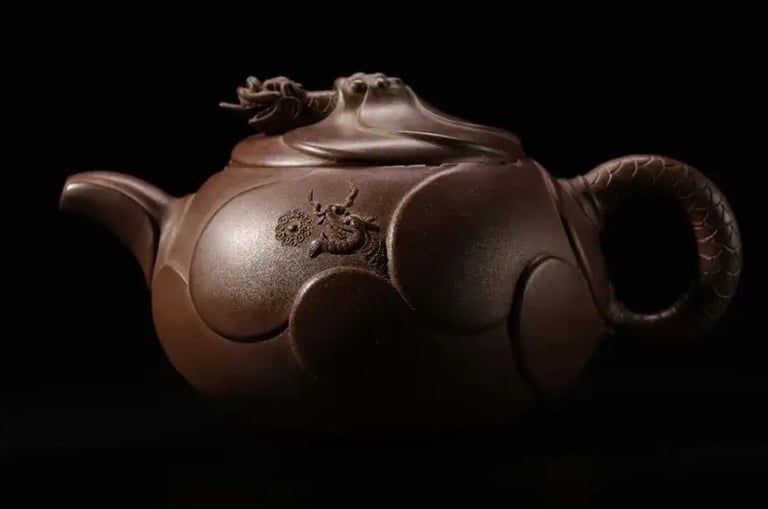

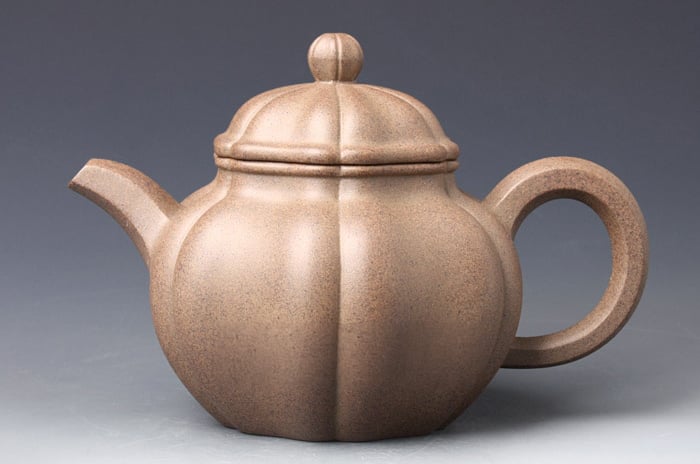


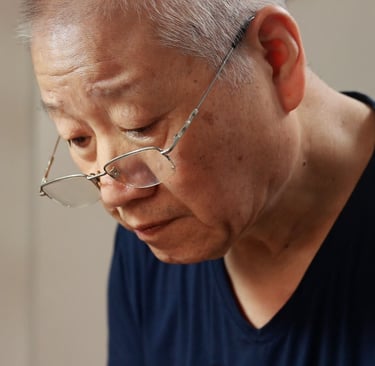
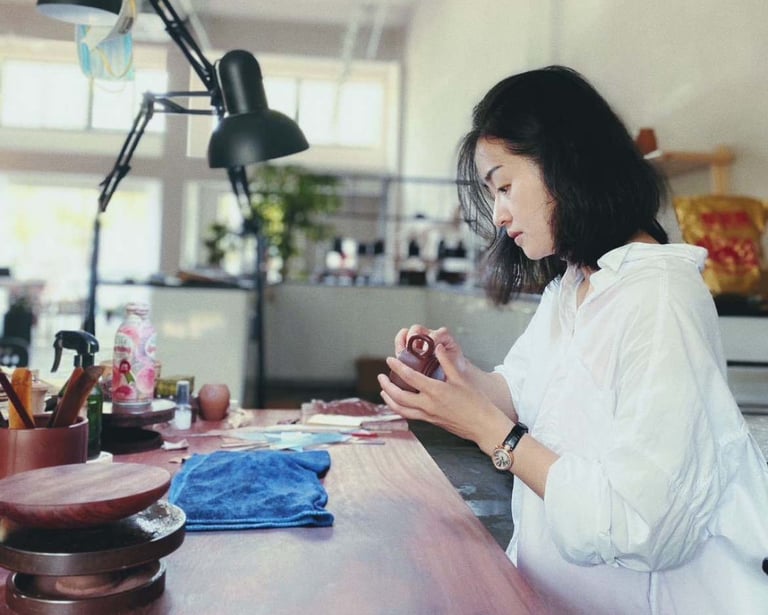

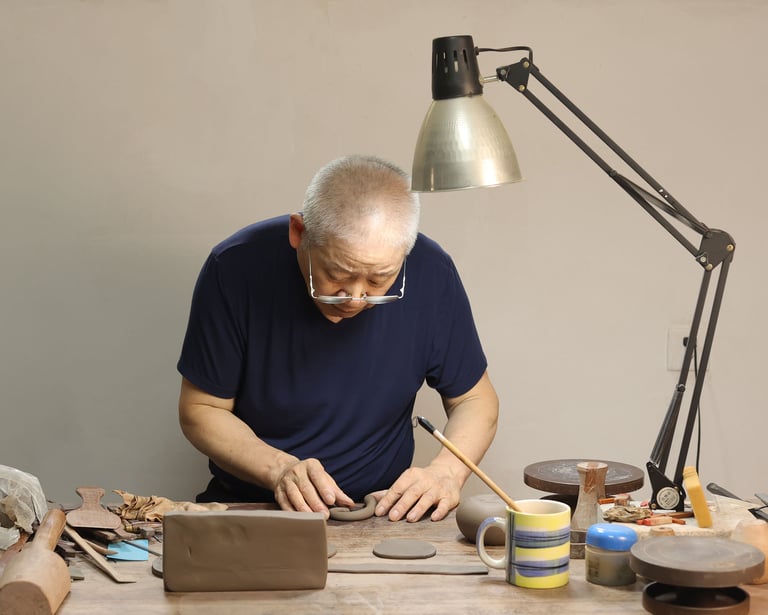

Conclusion
Yixing Zisha teapots are more than just tea-brewing vessels—they are a harmonious blend of artistry, tradition, and functionality. With their unique clay properties, intricate craftsmanship, and deep cultural ties, these teapots embody centuries of heritage and philosophy. Whether fully handmade or half-handmade, each teapot tells a story, reflecting the artisan's dedication and skill. As both functional tools and cultural artifacts, Yixing Zisha teapots are timeless treasures that continue to captivate tea enthusiasts and collectors worldwide. For more insights about tea and teapots, feel free to visit our blog page to learn more.

This video gives you a general understanding of Yixing Zisha teapots. For a more detailed exploration of everything related to them, you can read the full article below the video.
